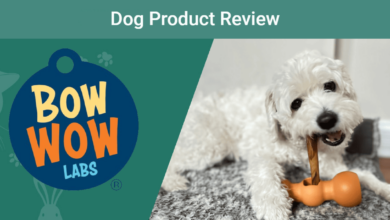
Native Advertising Marketing Explained A Comprehensive Guide
Native advertising marketing explained is more than just another advertising tactic; it’s a sophisticated approach that seamlessly blends with the user experience. This guide delves into the intricacies of native ads, exploring their core principles, different formats, and how to effectively integrate them into your marketing strategy. We’ll cover audience targeting, content creation strategies, platform selection, legal considerations, and performance measurement, providing a complete understanding of this evolving advertising landscape.
From crafting compelling copy to measuring campaign success, this guide equips you with the knowledge to navigate the world of native advertising. We’ll dissect the nuances of various native ad formats, comparing and contrasting their strengths and weaknesses. This detailed exploration promises a deep understanding, allowing you to strategically leverage native advertising to achieve your marketing objectives.
Introduction to Native Advertising Marketing
Native advertising blends seamlessly into the platform where it appears, mimicking the look and feel of the surrounding content. This approach aims to subtly integrate promotional messages into the user experience, often avoiding the jarring effect of traditional banner ads. The result is a more engaging and less intrusive form of advertising, aiming to capture user attention and drive conversions.The core principle behind native advertising is to avoid interrupting the user experience.
By mimicking the format and style of the platform, native ads feel less like advertisements and more like regular content. This approach leverages the inherent trust users have in the platform and its content creators, potentially leading to higher engagement rates and brand recall.
Definition of Native Advertising Marketing
Native advertising is a form of online advertising that matches the look and feel of the platform where it appears. Instead of traditional banner ads, native ads integrate seamlessly into the surrounding content, blending in with the platform’s design and user experience. This creates a less intrusive and more engaging advertising experience for the user.
Core Principles and Characteristics of Native Advertising
Native ads share several core characteristics that distinguish them from traditional advertising. They prioritize user experience over aggressive promotion. By mimicking the format and style of the platform’s content, native ads are designed to appear organic and trustworthy. This often results in higher engagement rates and a more positive user perception of the brand. Key characteristics include:
- Mimicking platform design: Native ads integrate visually with the surrounding content, matching the layout, fonts, and colors. This minimizes the “advertisement” feeling and promotes a natural flow.
- Content-driven approach: Native ads typically focus on delivering valuable information or engaging content related to the topic, rather than directly promoting a product or service. This approach is more engaging for the user.
- Emphasis on user experience: The primary goal of native advertising is to enhance the user experience, not interrupt it. This is achieved by ensuring the ads feel like part of the platform’s content, rather than intrusive advertisements.
Difference between Native Advertising and Traditional Advertising
Traditional advertising, often employing banner ads or pop-ups, is typically disruptive to the user experience. It’s frequently perceived as intrusive and irrelevant. Native advertising, on the other hand, aims to be non-intrusive and seamlessly integrated. The key difference lies in the approach to user engagement:
- User Experience: Traditional advertising often prioritizes the advertiser’s message, while native advertising focuses on providing value to the user. This leads to a less negative perception of the ad.
- Placement: Traditional ads are often placed in less relevant contexts, whereas native ads are placed in contexts that are more relevant to the user.
- Engagement: Traditional advertising often relies on flashy visuals and aggressive calls to action, whereas native advertising focuses on providing engaging content and experiences.
Examples of Successful Native Advertising Campaigns, Native advertising marketing explained
Numerous successful campaigns demonstrate the effectiveness of native advertising. For example, a company like “XYZ” might have sponsored a series of articles on a popular finance website, showcasing financial tips and insights, and subtly weaving in their investment product information. Similarly, “ABC” might have created a series of how-to videos on a lifestyle blog, highlighting their products as tools for achieving the lifestyle featured.
Native advertising marketing is all about blending seamlessly with the platform it’s on, right? But how do you really connect with your audience in a meaningful way? Thinking about DM direct message marketing explained can be really helpful in understanding how to reach people directly. dm direct message marketing explained gives you a good foundation for this type of engagement.
Ultimately, effective native advertising still relies on understanding your audience and delivering value, not just shoving ads in their faces.
Types of Native Advertising Formats
Native advertising comes in various formats, each tailored to specific platforms and objectives.
| Format | Description | Example |
|---|---|---|
| In-feed ads | Ads that blend seamlessly into the platform’s feed, such as social media feeds or news articles. | A sponsored article in a news feed. |
| Recommendation widgets | Ads that appear as recommendations within the platform. | A sponsored product recommendation on an e-commerce website. |
| Sponsored content | Ads that are presented as original content, like blog posts or articles. | A sponsored blog post about travel destinations on a travel blog. |
Understanding the Audience and Objectives
Native advertising thrives on understanding its audience. It’s not just about slapping a brand message onto a platform; it’s about seamlessly integrating into the user experience, mirroring the content format of the host site. This requires a deep dive into the target audience’s preferences and motivations. Knowing what they read, watch, and engage with online is crucial to crafting relevant and impactful native ads.Understanding the audience is fundamental to achieving native advertising goals.
A targeted approach is essential to maximizing ROI. This involves identifying key demographics, interests, and behaviors to create highly personalized and engaging experiences for potential customers. By tailoring content to resonate with specific groups, native ads become more effective in capturing attention and driving desired actions.
Key Factors in Targeting
Defining the target audience is a crucial first step. Consider factors like age, location, interests, and online behavior. Data from social media platforms, website analytics, and market research reports can provide invaluable insights. Analyzing audience engagement with similar content and identifying patterns in their online activity helps shape effective targeting strategies. Understanding their pain points and aspirations can also inform ad copy and design.
Native advertising marketing explained is all about blending seamlessly into the platform’s content, rather than disrupting the user experience. To maximize your reach, though, you need to know how to schedule Instagram posts effectively. Knowing how to schedule Instagram posts and why you should is key, as consistent posting can significantly improve your results. This all boils down to making your native ads feel organic and engaging, ultimately leading to better conversions.
For instance, if the target audience is young professionals, ads might focus on career advancement and personal development.
Tailoring Content for Resonance
Crafting compelling content is vital for effective native advertising. The content should mirror the style and tone of the host platform, blending seamlessly with the surrounding material. Understanding the platform’s audience will enable the development of content that resonates with their interests and preferences. High-quality images and videos, along with compelling storytelling, can further enhance engagement. Content should not feel like an advertisement, but rather an extension of the platform’s editorial offerings.
For example, a native ad for a fitness app could appear within an article about healthy eating, offering actionable tips and valuable information.
Defining Marketing Objectives
Clear marketing objectives are essential for measuring the success of a native advertising campaign. Defining specific, measurable, achievable, relevant, and time-bound (SMART) goals is crucial. These could include increasing brand awareness, driving website traffic, generating leads, or boosting sales. Objectives should align with overall business goals and provide quantifiable benchmarks for evaluating performance. For instance, a clear objective might be to increase website traffic by 15% within the next quarter.
Measuring Campaign Success
Tracking and analyzing the results of native advertising campaigns are crucial for optimization. Metrics provide insight into what works and what needs adjustment. Choosing the right metrics is vital to accurately assessing the effectiveness of the campaign. Crucially, these metrics must align with the pre-defined objectives.
Native Advertising Campaign Metrics
| Metric | Description | Example |
|---|---|---|
| Impressions | The number of times the ad was displayed. | 10,000 impressions |
| Clicks | The number of times the ad was clicked. | 200 clicks |
| Click-Through Rate (CTR) | The percentage of impressions that resulted in a click. | 2% CTR |
| Conversions | The number of desired actions taken by users (e.g., sign-ups, purchases). | 50 conversions |
| Cost Per Click (CPC) | The cost of each click. | $0.50 CPC |
| Cost Per Mille (CPM) | The cost of displaying the ad to 1,000 users. | $10 CPM |
| Return on Investment (ROI) | The profit generated from the campaign compared to the cost. | 100% ROI |
Content Creation Strategies

Crafting compelling native advertising content is key to success. It’s not just about placing ads; it’s about seamlessly integrating valuable information into the platform’s existing ecosystem, resonating with the audience, and ultimately driving conversions. This requires a deep understanding of the target audience, the platform’s voice, and the overall marketing objectives. The goal is to create content that feels organic and authentic, not like a forced advertisement.Effective native advertising transcends traditional banner ads.
It prioritizes providing genuine value to the reader while subtly promoting the product or service. This approach builds trust and fosters a positive brand perception. The focus is on creating content that the audience wants to consume, not just something they’re forced to endure.
Engaging and High-Quality Content
High-quality native advertising content is crucial for success. It requires a blend of journalistic principles, creative writing skills, and a deep understanding of the target audience. Think of it as crafting an article or video that subtly incorporates a brand message. This approach fosters trust and engagement. Avoid blatant advertising; instead, weave the product or service into the content naturally.
Compelling Copy
Compelling copy is the heart of any successful native ad. It needs to be concise, engaging, and informative, while still maintaining a natural tone that aligns with the platform’s style. Avoid overly promotional language; instead, focus on delivering value to the reader. Use strong verbs and evocative language to capture attention. For example, instead of “Buy our product now,” try “Unlock your potential with our innovative solution.”
Visual Appeal
Visually appealing content significantly enhances engagement. Images, videos, and infographics can make the message more memorable and impactful. Ensure visuals are high-quality and relevant to the content. The design should complement the platform’s aesthetic. A well-designed infographic, for instance, can quickly convey complex information, making the native ad more accessible and engaging.
Choose images that are relevant to the topic and that evoke a feeling appropriate to the message.
Content Formats
Different formats cater to various audience preferences and platform characteristics. Consider the following:
- Articles: Articles are a powerful format for conveying in-depth information and establishing thought leadership. They provide a platform for showcasing expertise and engaging with the audience on a deeper level. For example, a tech company could publish an article on emerging trends in AI.
- Videos: Videos are a dynamic format, ideal for conveying complex information or demonstrating a product. They can effectively communicate ideas through visuals and storytelling. For example, a beauty brand could create a video tutorial demonstrating a new makeup technique.
- Infographics: Infographics are effective for presenting data or complex information in a visually appealing and easily digestible manner. They are perfect for explaining statistical data, industry trends, or product features. For instance, a financial institution could create an infographic comparing different investment options.
Examples of Effective Native Advertising
Successful native advertising campaigns demonstrate the integration of valuable content with brand promotion. Several examples illustrate this well:
- The New York Times frequently features sponsored content that aligns with the publication’s journalistic style. The content is often informative and insightful, providing value to readers while subtly promoting a company or product.
- BuzzFeed is known for its interactive and engaging articles and videos. Sponsored content often fits seamlessly into their existing format, creating a natural experience for the reader.
- Medium hosts sponsored articles that maintain a high level of quality, usually related to specific topics or industries. The content is often written by experts, providing value to the readers while also subtly promoting the sponsor.
Platform Selection and Integration
Choosing the right platform is crucial for a successful native advertising campaign. It’s not just about finding a place to display your content; it’s about aligning your message with the specific audience and objectives you’ve defined. The platform needs to seamlessly integrate with your existing marketing strategy, ensuring a cohesive and impactful experience for your target audience.
Suitable Platforms for Native Advertising
Native advertising thrives on blending seamlessly with the platform’s content. This requires careful consideration of the various options available. News websites, social media platforms, and blogs are prime examples of environments where native ads can effectively integrate and resonate with the target audience. The key is to understand the unique characteristics of each platform and how it can support your specific campaign goals.
Factors like the platform’s audience demographics, engagement metrics, and existing content structure will greatly influence your campaign’s success.
Advantages and Disadvantages of Different Platforms
Different platforms offer varying degrees of advantages and disadvantages for native advertising. Some platforms might excel in reaching a specific niche audience, while others might provide broader reach but with less control over the presentation.
- Social Media Platforms: These platforms, such as Facebook, Instagram, and Twitter, allow for highly targeted advertising based on user data. The advantage is the ability to reach specific demographics and interests. A disadvantage is that algorithm changes and evolving user preferences can affect visibility and engagement.
- Content Aggregators and News Publishers: These platforms often feature a high level of trust from users, making native ads appear more organic. The advantage is credibility and a perceived lack of interruption. A disadvantage can be the difficulty in achieving the same level of targeting as social media.
- Video Platforms: Platforms like YouTube offer opportunities for engaging video ads that blend seamlessly with the platform’s content. The advantage is the ability to capture attention through visual storytelling. A disadvantage is the need for high-quality video production and a focus on short-form content.
- Mobile Apps: Incorporating native ads into popular mobile apps can provide a direct channel to a highly engaged audience. The advantage is the ability to leverage user engagement within a specific context. A disadvantage is the potential for user frustration if the ads are intrusive or poorly designed.
Key Considerations in Platform Selection
Several key factors influence the choice of a native advertising platform. Consider the platform’s audience, the nature of your content, and your campaign objectives. A platform that aligns with your target demographic will likely yield better results. Analyzing the platform’s audience demographics, engagement metrics, and existing content structure will be beneficial in this evaluation.
- Target Audience Alignment: The platform’s audience should closely mirror your target demographic to ensure effective ad delivery and engagement. Consider the interests and habits of your audience when selecting a platform. For example, if your target audience is avid gamers, a gaming-focused platform would be a strong candidate.
- Content Integration: The platform’s content structure should allow for a seamless integration of your native ads. This ensures that the ads feel natural and relevant to the surrounding content. A mismatch between the ad and the platform’s style can lead to poor performance.
- Campaign Objectives: Your campaign goals will directly influence your platform selection. If your objective is brand awareness, a platform with high visibility might be suitable. If the objective is lead generation, a platform with robust tracking capabilities will be important.
Integrating Native Ads into Marketing Strategies
Integrating native advertising into existing marketing strategies requires careful planning. Ensure that the campaign aligns with your overall branding and messaging. Consider the timing and placement of ads within the platform to maximize impact. Use analytics to track performance and make necessary adjustments to optimize results.
Table of Native Advertising Platforms
| Platform | Strengths | Weaknesses |
|---|---|---|
| Social Media (Facebook, Instagram) | Highly targeted advertising, broad reach, robust analytics | Algorithm changes can affect visibility, potential for ad fatigue |
| Content Aggregators (News Sites) | High credibility, perceived as organic, strong user engagement | Limited targeting options, potential for less granular reach |
| Video Platforms (YouTube) | Engaging video format, opportunity for storytelling, high engagement potential | Requires high-quality video production, short-form content focus |
| Mobile Apps | Direct channel to highly engaged users, contextual relevance | Potential for user frustration if ads are intrusive, can be difficult to track performance |
Legal and Ethical Considerations
Navigating the world of native advertising requires a keen understanding of the ethical implications and legal frameworks surrounding this marketing approach. It’s not just about crafting compelling content; it’s about doing so responsibly and transparently. Failure to adhere to these principles can damage brand reputation and lead to legal repercussions.This section delves into the ethical dilemmas inherent in native advertising, explores relevant legal guidelines, and emphasizes the importance of maintaining transparency to build trust with consumers.
We’ll cover best practices for disclosure and transparency, examining legal requirements across different regions to ensure a solid foundation for your native advertising campaigns.
Ethical Implications of Native Advertising
Native advertising, while powerful, presents ethical challenges. The blurring lines between editorial content and advertising can lead to consumer confusion and mistrust. If not handled carefully, this approach can be perceived as manipulative, undermining the integrity of the platform hosting the advertisement. Advertisers must be mindful of the potential for misleading or deceptive practices, and ensure their campaigns align with the values and principles of the publication or platform.
Promoting products or services that could be harmful or exploitative is a serious ethical breach.
Native advertising marketing explained boils down to seamlessly integrating ads into the platform’s content, making them feel less like interruptions and more like valuable information. This approach can significantly boost engagement, but to truly maximize its impact, establishing thought leadership on LinkedIn is crucial. By consistently sharing insightful content and engaging with the community, you position yourself as a go-to expert, which can dramatically increase your native advertising marketing effectiveness.
Check out how to effectively build your LinkedIn thought leadership and establish authority here: linkedin thought leadership establish authority. This, in turn, will help you resonate more authentically with your target audience, making your native ads even more impactful.
Legal Guidelines and Regulations
Various jurisdictions have implemented guidelines and regulations regarding native advertising. These often center on transparency, disclosure, and preventing deceptive practices. The legal landscape is dynamic and varies significantly between countries. Specific regulations may address the use of endorsements, the disclosure of sponsored content, and the need for clear differentiation between advertising and editorial content. Understanding these guidelines is crucial to avoid legal pitfalls and maintain compliance.
Maintaining Transparency and Avoiding Deceptive Practices
Transparency is paramount in native advertising. Consumers should be able to readily identify sponsored content as such. Deceptive practices, such as masking advertisements as impartial editorial pieces, erode trust and can lead to legal challenges. Clear disclosure mechanisms are essential to ensure that consumers are fully aware of the commercial nature of the content. This involves using unambiguous language and formats that clearly signal the sponsored nature of the content.
Best Practices for Disclosure and Transparency
To avoid any misinterpretations or suspicions, certain best practices for disclosure and transparency should be meticulously followed. These best practices include using clear and concise language to disclose the sponsored nature of the content. The placement of disclosure labels should be prominent and easily noticeable. The design and layout of the ad should be distinguishable from the surrounding editorial content.
Using a separate, designated section or banner specifically for disclosures can enhance the clarity and transparency.
Legal Requirements for Native Advertising Across Different Regions
Legal requirements for native advertising vary significantly across different regions. For example, the European Union has specific regulations concerning the disclosure of sponsored content. The Federal Trade Commission (FTC) in the United States has guidelines related to transparency and the prevention of deceptive advertising. To ensure compliance, a thorough understanding of local regulations is crucial.
- Europe (EU): The EU’s advertising regulations often require explicit disclosure of sponsored content, emphasizing the importance of transparency in presenting commercial messages within editorial contexts.
- United States (FTC): The FTC regulates deceptive advertising, emphasizing that native ads must be clearly identifiable as such to avoid consumer confusion. They emphasize clear labeling and distinct presentation to avoid misleading consumers.
- Asia-Pacific (varies): Laws in different Asian-Pacific countries vary, highlighting the need for regional-specific research and compliance with local regulations. Adherence to specific regional standards is critical to avoid any legal issues.
Measuring and Optimizing Performance
Native advertising success hinges on meticulous tracking and analysis. Understanding campaign performance is crucial for identifying what resonates with your target audience and fine-tuning future efforts. This allows for continuous improvement and a higher return on investment. It’s not just about the number of clicks; it’s about the overall impact on brand perception and engagement.Robust measurement systems and insightful data analysis are fundamental to optimizing native advertising campaigns.
This involves identifying strengths and weaknesses in your content, placement, and audience targeting. By closely monitoring key performance indicators (KPIs), you can identify areas for improvement and ensure that your campaigns are as effective as possible.
Performance Tracking Methods
Tracking the effectiveness of native advertising campaigns requires a multi-faceted approach. Several methods can be employed to gather comprehensive data on campaign performance. These include tracking website traffic, engagement metrics like time on page and social shares, and conversion rates. Analyzing these metrics helps to pinpoint the most effective aspects of the campaign. For example, tracking how many users click through from a native ad to a landing page provides valuable data about the ad’s effectiveness.
Analyzing Data for Improvement
Data analysis is a critical step in optimizing native advertising campaigns. It involves identifying patterns and trends in the collected data to pinpoint areas where the campaign can be improved. Tools for data analysis can range from basic spreadsheet software to advanced analytics platforms. Detailed reports that visualize trends and patterns, such as graphs illustrating the relationship between impressions and conversions, are crucial for a clear understanding of campaign performance.
Campaign Optimization Strategies
Optimizing native advertising campaigns involves adjusting various aspects based on performance data. This includes tweaking ad copy, targeting parameters, and creative elements to enhance engagement. For example, if a particular ad copy variant performs better than others, it can be emphasized in future campaigns. Analyzing click-through rates, conversion rates, and bounce rates helps to refine ad messaging and content to better engage the target audience.
A/B Testing in Native Advertising
A/B testing is a powerful tool for optimizing native advertising campaigns. It involves creating variations of ads or content elements to compare their performance. For instance, comparing different headlines, images, or calls to action can reveal which versions resonate best with the target audience. This data-driven approach helps refine content and ultimately maximize campaign effectiveness. By carefully evaluating the results of A/B tests, you can confidently select the best-performing variations.
Common KPIs and Interpretation
| KPI | Description | Interpretation |
|---|---|---|
| Impressions | Number of times the ad was displayed. | Higher impressions indicate greater visibility, but don’t equate to engagement. |
| Clicks | Number of times the ad was clicked. | Click-through rate (CTR) is derived from clicks and impressions. A higher CTR suggests the ad is compelling. |
| Engagement Rate | Measure of user interaction with the ad (e.g., time spent on page, social shares). | High engagement signifies that the ad successfully captures attention and encourages interaction. |
| Conversion Rate | Percentage of users who complete a desired action (e.g., making a purchase, signing up). | A higher conversion rate signifies the ad’s ability to drive desired actions. |
| Cost Per Click (CPC) | Cost incurred for each click on the ad. | Lower CPC indicates better value for money spent on the campaign. |
Case Studies and Examples
Native advertising, when done right, can be a powerful tool for brands to connect with their target audience in a more authentic and engaging way. It’s not just about subtly plugging a product; it’s about weaving a narrative that resonates with the reader’s interests and values. Successful campaigns demonstrate a deep understanding of the platform, the audience, and the overall marketing strategy.Beyond the theory, real-world examples offer invaluable insights.
They highlight the nuances of execution, the importance of measuring results, and the potential pitfalls to avoid. Understanding these case studies allows marketers to refine their strategies, learn from past successes and failures, and ultimately, achieve better outcomes.
Successful Native Advertising Campaigns
These campaigns show how native ads can be integrated seamlessly into a platform’s content flow, building trust and brand awareness rather than causing irritation.
- Red Bull’s “Stratos” campaign, which integrated content related to the Red Bull Stratos jump into various online platforms. This approach engaged with audiences interested in extreme sports and adventure, showcasing Red Bull’s brand values through a story rather than a direct advertisement.
- Airbnb’s utilization of user-generated content on social media platforms. They highlight the authentic experiences offered by their hosts, aligning perfectly with the platform’s core mission and audience interest.
- Patagonia’s emphasis on environmental advocacy through engaging blog posts and articles. This strategy resonated with environmentally conscious consumers, creating a strong connection with their values and shaping a positive brand image.
Objectives Achieved
Examining the objectives behind these campaigns reveals the measurable results achievable through effective native advertising.
- Increased Brand Awareness: The Patagonia example showcases how authentic content can build brand awareness by associating the brand with positive values. Measurable results would be increases in social media engagement, website traffic, and brand mentions.
- Improved Customer Engagement: Airbnb’s user-generated content fosters deeper engagement by connecting with potential travelers on a personal level. This is measurable through comments, shares, and bookings.
- Enhanced Website Traffic and Conversions: The Red Bull Stratos campaign illustrates how native ads can drive traffic to a company’s website and product pages. This is tracked by monitoring website visits, time spent on site, and ultimately, sales or lead generation.
Lessons Learned
Successful native advertising isn’t about just being “invisible”. It’s about understanding the audience, the platform, and the content format.
- Authenticity is Key: Authenticity resonates with audiences and fosters trust. Creating content that aligns with the platform’s values and the audience’s interests is critical.
- Relevance is Paramount: Native ads should integrate seamlessly with the platform’s content flow, avoiding disruptive or intrusive formats.
- Measurable Objectives: Defining clear and measurable objectives is crucial for assessing the success of a native advertising campaign. Using analytics tools to track website traffic, engagement metrics, and sales conversions is essential.
Challenges in Native Advertising Campaigns
There are inherent challenges in the implementation of native advertising campaigns.
- Maintaining Transparency: Consumers are increasingly aware of advertising techniques, demanding authenticity and transparency. Maintaining a genuine connection with the audience is vital.
- Ensuring Compliance: Adherence to platform guidelines and industry regulations is crucial. Failing to comply with these guidelines can lead to penalties or campaign rejection.
- Measuring ROI: Measuring the return on investment of native advertising can be complex. Clearly defined KPIs and robust analytics are essential for accurately assessing performance.
Resources for Further Research
To delve deeper into native advertising case studies, consider these valuable resources:
- Industry Publications: Publications like AdAge, Marketing Week, and others often feature articles and case studies on successful campaigns.
- Marketing Agencies: Many marketing agencies share case studies on their websites, providing detailed examples and insights.
- Academic Research Papers: Academic journals focusing on marketing and advertising may offer research papers on specific native advertising campaigns.
Closing Summary: Native Advertising Marketing Explained

In conclusion, native advertising marketing explained offers a unique opportunity to connect with audiences in a more authentic and engaging way. By understanding the principles, strategies, and legal considerations, you can leverage native advertising effectively. This guide has provided a comprehensive overview, covering everything from content creation to platform selection and performance measurement. Now, it’s time to apply this knowledge to your specific marketing goals and watch your campaigns thrive.





